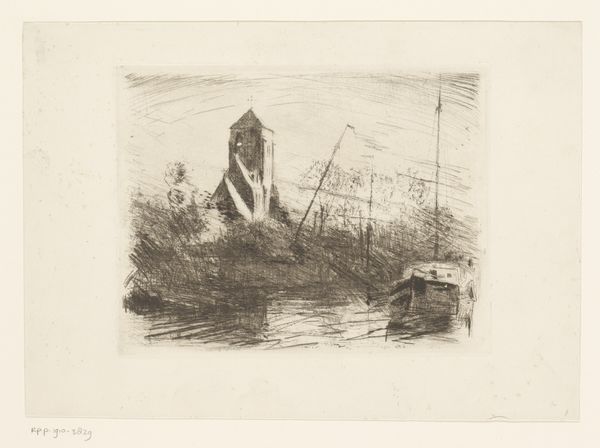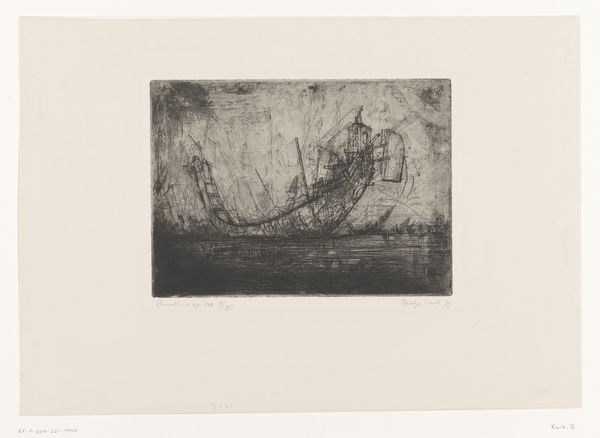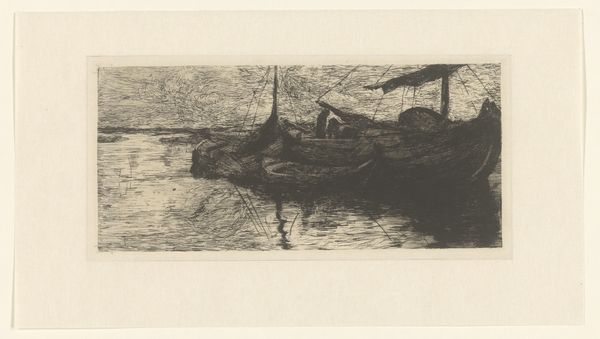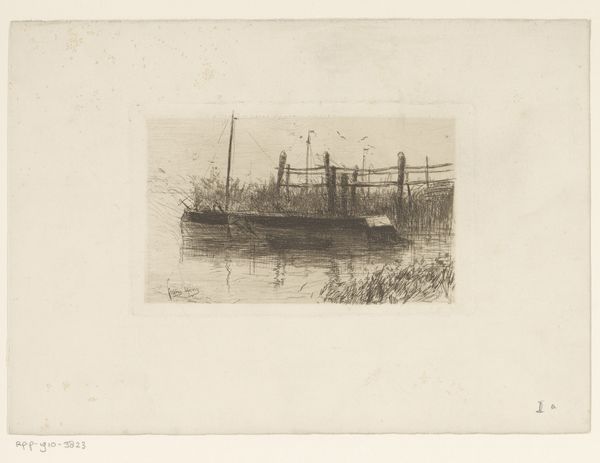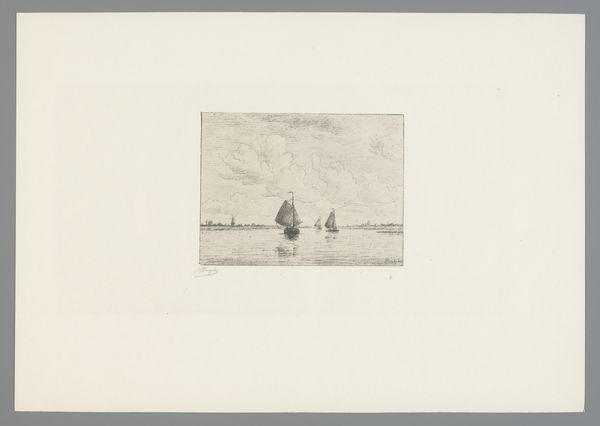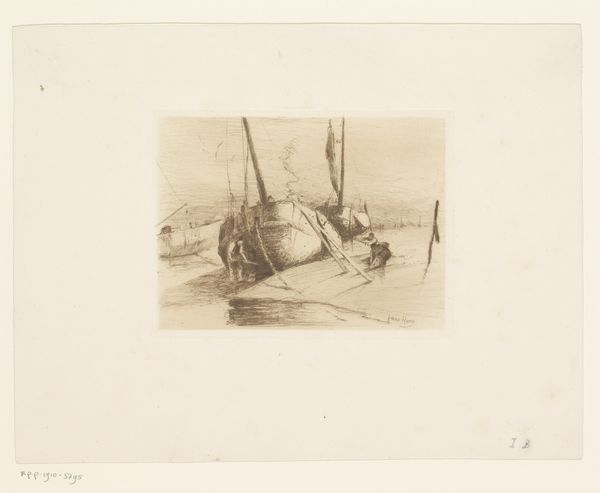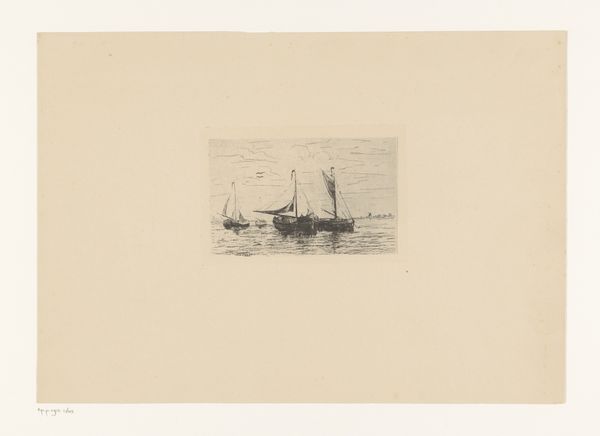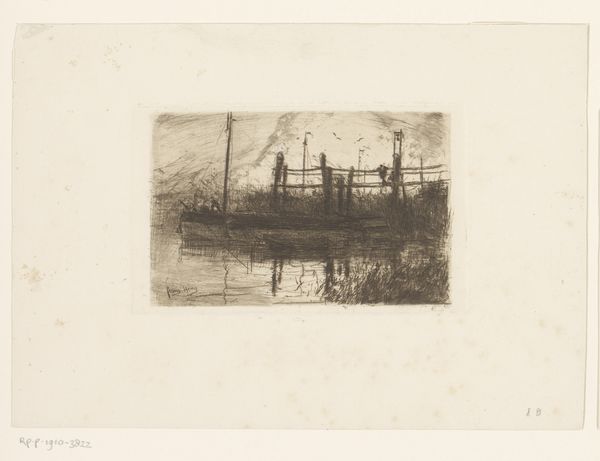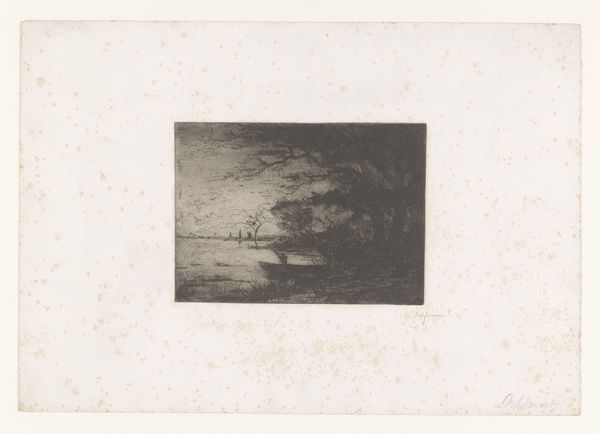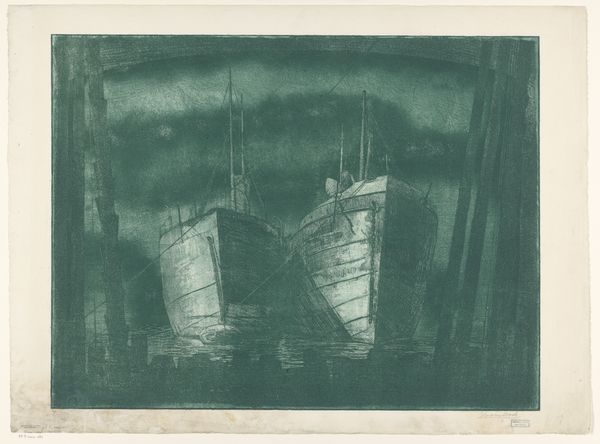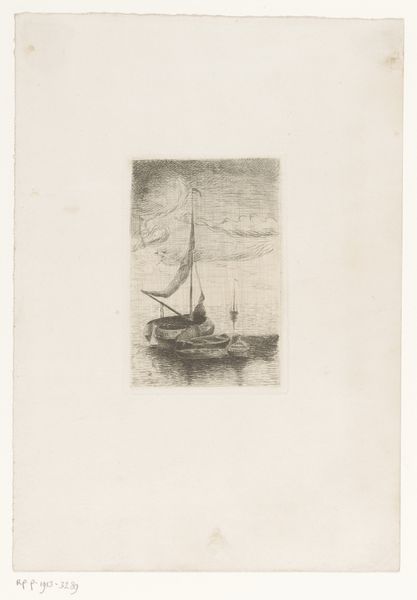
print, etching
# print
#
impressionism
#
etching
#
landscape
#
river
Dimensions: height 151 mm, width 212 mm
Copyright: Rijks Museum: Open Domain
Curator: Before us we have "Boot op de Adour" or "Boat on the Adour", an etching by Carel Nicolaas Storm van 's-Gravesande from around 1870 or 1871. It’s part of the Rijksmuseum collection. Editor: It feels like a half-remembered dream, doesn't it? Like a whispered story from a sailor, all grit and faded ink. It almost evaporates before you can grasp it. Curator: That sense of transience really comes from the etching process. The delicate lines, the way he captures the light reflecting on the water – it's a testament to the skills involved in printmaking. It also really puts labor at the forefront for consideration. Editor: Absolutely. And beyond the craft, there's something so melancholic about that lone boat. It evokes such stillness but feels so lost in that blurred scene. There are other figures present, but I can't see who or what they are! Curator: It’s the Adour River. The waterways were the economic veins for much of Europe at this point. It really is about industrial movement and material exchange with sailboats serving the crucial purpose. Editor: Of course! That actually resonates so well with the hazy figures now. I am now understanding that the picture is about life unfolding quietly along the waterway. But there’s an element of surrender as if those little blurry people on the Adour are merely tiny cogs in the huge commercial world around them. Curator: Van 's-Gravesande, through this etching, not only demonstrates his technical ability but he gives us insight into the economic landscape of that time. What was produced in 1871 and for what social class is the real core. Editor: Which allows us to see his boat as so much more than a static image – we realize it is one working piece of a giant material exchange network. That's given me a new depth of perspective.
Comments
No comments
Be the first to comment and join the conversation on the ultimate creative platform.
